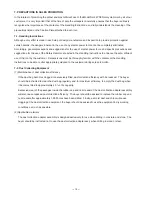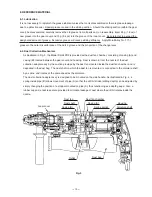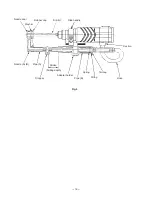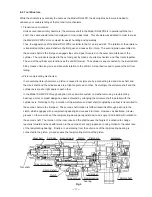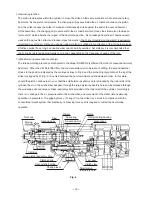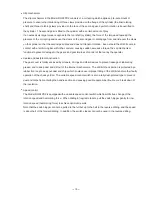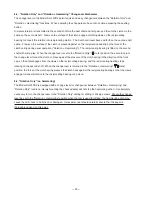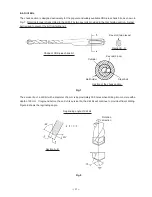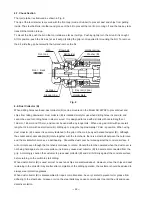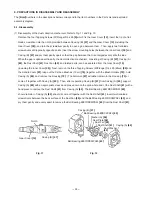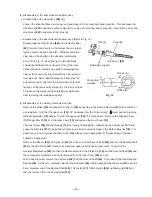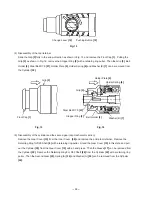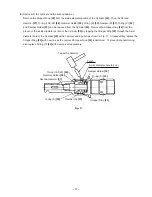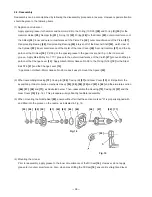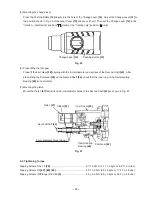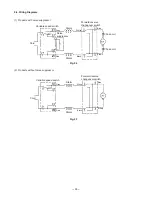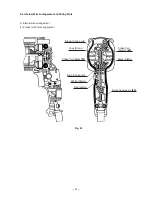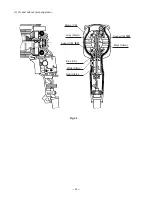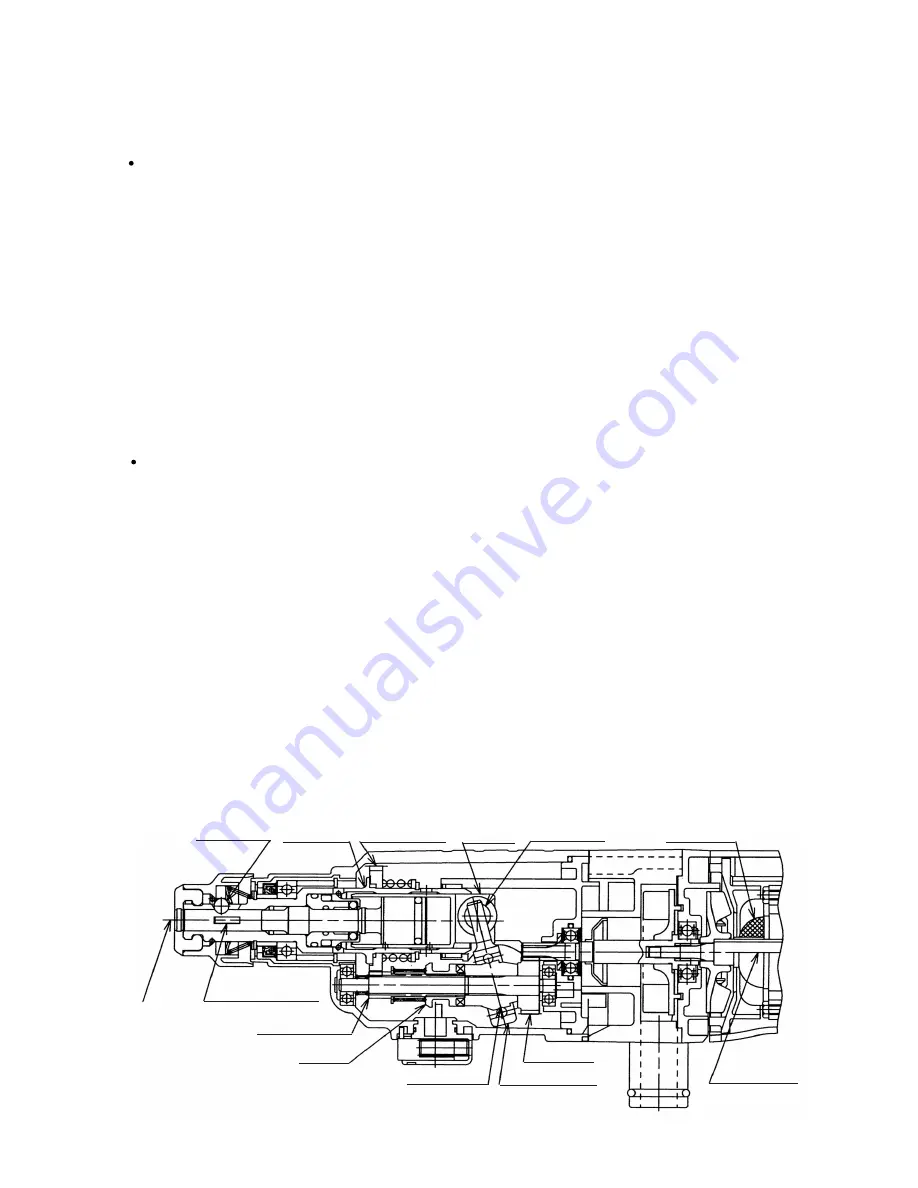
--- 17 ---
8-3. Tool Structure
While the structure is essentially the same as the Model DH 24PD, the descriptions below are included to
enhance your understanding of the tool and its mechanisms.
Transmission of rotation
Unlike conventional rotary hammers, the armature shaft in the Model DH 24PD2 is in parallel with the tool
shaft - the same structure that is employed in most impact drills. This structure was adopted in order to make
the Model DH 24PD2 more compact for easier handling and operability.
Thus, the appearance of the Model DH 24PD2 is similar to that of an impact drill. The rotation of the armature
is transmitted to the second shaft via the first gear, and causes it to rotate. The second pinion assembled on
the second shaft via the first gear, engages the second gear mounted on the outer circumference of the
cylinder. The cylinder is coupled to the second gear by means of a slip mechanism, and they rotate together.
The end of the cylinder also functions as the drill bit retainer. The cylinder is key-connected to the inserted drill
bit by means of two key rails, and transmits rotation to the drill bit. A steel ball is used to prevent the bit from
falling.
Piston reciprocating mechanism
In conventional rotary hammers, a piston is caused to reciprocate by a connecting rod and crank shaft, and
the crank shaft and the cylinder axis are at right angle to each other. Accordingly, the armature shaft and the
cylinder axis are at a right angle to each other.
In the Model DH 24PD2, through adoption of a spiral drive system (a mechanism using a reciprocating
bearing), a more compact design has been achieved by arranging the armature shaft in parallel with the
cylinder axis. Referring to Fig. 5, rotation of the armature and dust shaft (coupled by a spline) is transmitted to
the second shaft via the first gear. The second shaft rotation is further transmitted through a spline to the
clutch, which engages with a reciprocating bearing and causes it to rotate. However, as illustrated, circular
grooves on the inner race of the reciprocating bearing are positioned on an angle of inclination with relation to
the second shaft. The rotation of the inner race and the shaft causes that angle of inclination to change
regularly forward and back with relation to the second shaft, and produces a rocking motion to the outer race
of the reciprocating bearing. Finally, a rod extending from the outer race of the reciprocating bearing is
connected to the piston, pin and causes the reciprocating motion of the piston.
Piston
Tool shaft
Armature
Key rail (2 pcs.)
Second shaft
Steel ball
Second gear
Fig. 5
First gear
Motor shaft
Cylinder
Reciprocating
bearing
Ring groove
Piston pin
Clutch
Содержание DH 24PD2
Страница 26: ... 23 Fig 10 Dust collector B structure ...
Страница 44: ......












